Mathematics - All about Complex numbers
Hello it's a me again drifter1! Today we continue with Mathematics to talk about everything that you have to know about Complex numbers. I will give you all the theory with examples of this topic of maths. This knowledge will be enough in anything that needs Complex numbers in general. I hope that this post will be useful!
For printing equations I will use the tool quicklatex which was recommended by @drdawud.
So, without further do, let's get started!
Getting into the need of Imaginary numbers
When solving equations in Mathematics we sometimes get in trouble, cause no real number solution(s) can be found.
This means that we have:
- no natural (0, 1, 2, ...)
- no integer(..., -2, -1, 0, 1, 2, ...)
- no rational (ratio's of integers)
- no real (numbers with decimals / digits after the decimal point) AND
- no irrational (reals that are not rational) solution
For example think about:
To find the solution of such a 2nd-order polynomial we use the formula:
The subroot is negative and so we say that the equation has no solution. But, we are wrong!
The right thing to say is : "There is no solution in the real number set".
We know that in general the solutions depend on the subroot:
- b^2 - 4ac > 0 => 2 solutions
- b^2 - 4ac = 0 => 1 double-solution
- b^2 - 4ac < 0 => no real solutions
Let's stay on that last line: "there are no real solutions".
We know that a polynomial equation of 2nd-order has 2 solutions.
For positive we have 2 solutions, for zero we have 1 double-solution and so the same solution twice, but either way they are 2.
Does this mean that there are 2 "hidden" solutions in the last case? Yes it does!
The Complex number set
But, where are those solutions at? Well, they are in an extension of the real number set: the complex number set.
Because, the problem of finding the solutions is in the negative subroot we define a number i, the so called imaginary unit or indeterminate that will help us solve it.
i is a imaginary number with the following property:
Using it in the root of our previous example now gives us:
So, the solutions are:
There it is! There are really 2 solutions for such equations that you could not solve before!
These solutions are not real numbers, but the problem was not finding real solutions, but finding 2 solutions that we knew existed, because of the polynomial equation's order that is 2!
Thinking about this formula and seeing the form of the solutions we can clearly see how an complex number is build up!
A complex number is of the form:
where:
- z is the complex number notation
- a and b are real numbers
- i is the imaginary unity
Complex number properties
Some more things about z = a + bi:
- a is called the real part and is also noted as Re(z)
- b is called the imaginary part and is also noted as Im(z)
- if b = 0 then z is of course a real number
- if a = 0 then z is a "purely" imaginary number
The set of "purely" imaginary numbers is noted as I.
Because when setting b = 0 we get real numbers we say that:
- the complex number set C of course contains the real number set R, with R being a subset of C
- all the properties of addition and multiplication of R apply to C too
- if z is a complex number then: z+0 = z and z*1 = z
- Each complex number z can be written as: z = a + bi, where a and b are unique
The thing that C doesn't inherit from R is the arrangement and order relations of numbers.
We can't say that:
cause then -1 > 0, which can't be true!
Of course 2 complex numbers z = a + bi and w = c + di are equal if:
- a = b
- c = d
Of course this means that z = 0 only if a + bi = 0 => a = b = 0
For this last equation we of course have to note that a AND b are BOTH real numbers!
Cartesian form/notation of Complex numbers
Each complex number is defined by the pair (a, b) = (Re(z), Im(z)).
Using the 2-dimensional Cartesian coordination system each complex number can so be represented by a point M(z) = M(a, b) on top of that complex plane, that contains a real(Re) and imaginary(Im) axis.
Because of that representation we can now do calculations on complex numbers like they where vectors.
So, if z = (OA) and w = (OB)
where z, w are complex numbers and OA, OB their corresponding vectors
Then we can say that:
k*OA + λ*OB is a vector OP that corresponds to a new complex number v = kz + λw
We can clearly see that the addition of vectors is the same as the addition of the complex numbers directly!
Operations between Complex numbers
if z1 = a + bi and z2 = c + di are two complex numbers then:
If z = a + bi:
Everytime i is in the denominator, like in the divisions of above, we multiply the numerator and denominator with the conjugate of the denominator (more about that later on). For z1/z2 with (c - di) and for 1/z with (a - bi).
This should be a rule for you, cause it is needed everytime we have i in the denominator!
The addition in "vector-form" looks like this:
Of course because a complex number can be represented by vectors we have that:
- the vector z1 + z2 is the addition of the vectors z1 and z2
- the vector z1 - z2 is the addition of the vectors z1 and -z2 (or the substraction with z2)
- etc.
Exponentials of Complex numbers
Suppose z = a + bi is a complex number.
The powers z^k (with k being natural) are:
For the last one k-times.
Of course:
if z is not zero!
For the powers of integer exponents the same properties and rules apply as in real numbers.
Some properties of rational exponents can be defined, but there are also some exceptions.
This means that we will just remember that we can have integer exponents and use them like real numbers!
What about the powers of i?
Supposing n = 4q + r we have that r = {0, 1, 2, 3}.
And so:
Which means that we end up with the cases:
For example:
Conjugate of Complex numbers and Properties
The complex number z* (or z with line on top) that has the same real part (a) but the opposite in sign imaginary part (b) as z is called the conjugate of z.
For example conjugate of z = 2 - 3i is z* = 2 + 3i.
The geometric represenation of the conjugate is:
Geometrically we can see that the conjugate of z (z*) and z are symmetrical to the x'x axis.
Which means that if z = a + bi, which is the point M(z) = (a, b) then:
z* = a - bi , which is the point M(z*) = (a, -b)
The following are some of the most important properties of the conjugate:
- zz* = (a + bi)(a - bi) = a^2 + b^2
- (z1 + z2)* = z1* + z2*, which can be generalized to n numbers, cause we apply the conjugate for each term/number individually
- (z1z2)* = z1*z2*, which can again be generalized for n numbers.
- (z^n)* = (z*)^n, for every natural n>=0 [so the exponent can be put out of the conjugate]
- (z1/z2)* = z1*/z2*, so the conjugate can be applied to the numerator and denominator independently
- z + z* = 2a = 2Re(z) AND z - z* = 2bi = 2Im(z)i
From the last two properties we have that:
- z is a real number if z* = z, cause z - z* = 0 and so there is no imaginary part.
- z is a imaginary number if z* = -z, cause then z + z* = 0 and so there is no real part.
We use these exact properties to check if a complex number is real or imaginary!
The equation az^2 + bz + c = 0, with a!=0
So, to sum up, let's get back to the equation we started with!
We have the equation:
where a, b, c are real numbers.
If x is in the real number set then it will also be a real number and so we have the results that we had before which are:
- b^2 - 4ac > 0 => 2 solutions
- b^2 - 4ac = 0 => 1 double-solution
- b^2 - 4ac < 0 => no real solutions
What if x is not a real number, but a complex number z?
Well, then:
- b^2 - 4ac > 0 => 2 real solutions
- b^2 - 4ac = 0 => 1 real double-solution
- b^2 - 4ac < 0 => 2 complex solutions which are supplementally (one is the conjugate of the other)
And we get our final solution from:
Which will give us:
for each of the 3 cases.
Absolute value of Complex numbers and properties
Using the Cartesian form/notation for a complex number we can start talking about the absolute value of complex numbers.
The absolute value is defined as the distance of the origin point O(0, 0) and the point M(a, b) which represents the complex number in the complex plane.This means that the absolute value is also equal to the length of the vector OM.
In the Cartesian space this looks like this:
So, the absolute value can be found using the Pythagorean Theorem on the triangle to find the diagonal.
That way the absolute value equals:
If |z| = 0 then of course z = 0.
The following properties apply to the absolute value |z| of a complex number z:
- |z| = |-z| = |z*|, which means that the absolute value of z is equal to the absolute value of it's opposite and it's conjugate
- |z| = zz* [we already saw something similar before and this will of course be useful in calculations]
- |z1z2...zn| = |z1||z2|...|zn|, which means that the absolute value of an product of complex numbers can be written as the product of the absolute values of each complex number individually [simplest case is: |z1z2| = |z1||z2|]
- |z^n| = |z|^n for all naturals n >= 0, [the power can be found after finding the absolute value]
- |z1/z2| = |z1|/|z2|, the same way as in multiplication the division's absolute value equals the quotient of the absolute values of the numerator and denominator individually.
Worth noting is the relation:
Which is true for every real z, but not true for every complex number z
For example:
but,
and so:
But this makes it useful in another way, cause:
- If z is real then |z|^2 = z^2
- If z is imaginary then |z|^2 = -z^2
The previous statement and the last 2 properties of the conjugate (as I mentioned before) are both useful when checking if a complex number is real or imaginary! So, to check this we use either one of these, depending on the data we have given to us.
Complex number argument and polar form
Using the Cartesian from again we can define another thing called the argument or phase of z.
The argument of z or arg(z) is the angle φ of (OM) where O(0, 0) is the origin point and M(a, b) is the point that represents the complex number z = a + bi.
This looks like this:
A complex number z !=0 can of course have multiple arguments.
For two random arguments φ1, φ2 we have that:
φ2 - φ1 = 2kπ, with k being an integer and φ1, φ2 in radians
Because there are more then one arguments we use the principal argument in the interval [0, 2π) that defines the angle of (OM) to the x'x axis. That way:
Arg(z) = φ, where 0 <= φ < 2π
This one is of course unique.
So, if z != 0 is a complex number z = Re(z) + i*Im(z) then:
- if Arg(z) = 0 <=> Im(z) = 0 and Re(z) > 0
- if Arg(z) = φ, where 0 < φ < π/2 <=> tanφ = Im(z)/Re(z) with Im(z) > 0 or Re(z) > 0
- if Arg(z) = π/2 <=> Re(z) = 0 and Im(w) > 0
- If Arg(z) = φ, where π/2 < φ < π <=> tanφ = Im(z)/Re(z) with Im(z) > 0 or Re(z) < 0
- If Arg(z) = π <=> Im(z) = 0 and Re(z) < 0
Using those cases and with a simple diagram we can solve any case!
This means that we end up with the following very useful cases for z = a + bi:
- If z is real and a > 0 then Arg(z) = 0
- If a = 0 and b > 0 then Arg(z) = π/2
- If z is real and a < 0 then Arg(z) = π
- If a = 0 and b < 0 then Arg(z) = 3π/2
The argument of the conjugate of z is:
Arg(z*) = 2π - φ
where Arg(z) = φ and φ in the interval (0, 2π)
Trigonometric/Polar Form of complex numbers
Because of the argument and the Cartesian form we can also talk about the trigonometric or polar form of a complex number.
So, if z = a + bi is a complex number z != 0, M(a, b) is the point in the complex plane that represents it and arg(z) = φ is it's argument then:
a = |z|cosφ and b = |z|sinφ
Because of that:
z = |z|(cosφ + isinφ)
All this is true only if |z| > 0, which means that z != 0.
As mentioned previously the argument is not unique.
Suppose two complex numbers z1, z2 in polar form .
If z1 = |z1|(cos(φ1) + isin(φ1)) and z2 = |z2|(cos(φ2) + isin(φ2)
Then we can say that:
z1 = z2 <=> |z1| = |z2| AND φ1 - φ2 = 2kπ, where k is an integer
This can be useful when checking if two complex numbers are equal!
We can again define properties for operations that I will leave out for simplicity.
The polar form is useful when solving equations of complex numbers that are in the forms:
- z^n = 1
- z^n = a, where a is complex
- Polynomials of n-order/n-degree
- and more...
I will not get into how we solve them...
Euler's formula
One very important formula is Euler's formula.
For any real number x we define:
Exercises and more information
I also wanted to do some exercises, but stepped on the following links that contain many many exercises that also contain things that we don't covered!
And you can of course read more about Complex number in Khan's Academy:
Image sources:
And this is actually it and I hope that you learned something!
I also plan to make a post about trigonometry later on!
Bye!
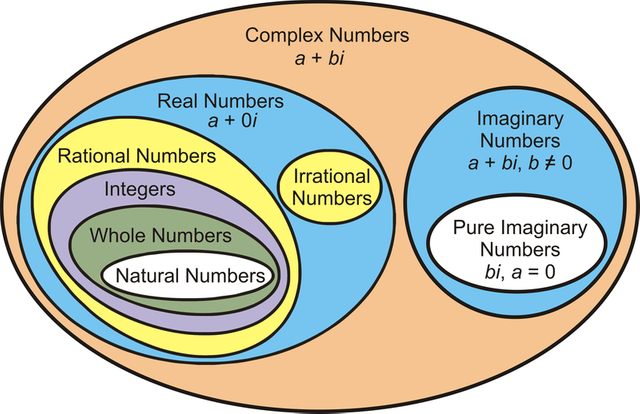

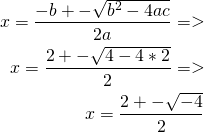


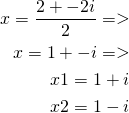


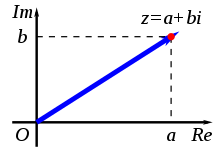
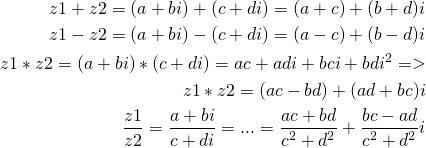

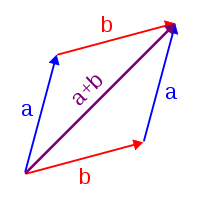
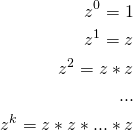


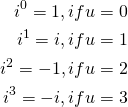

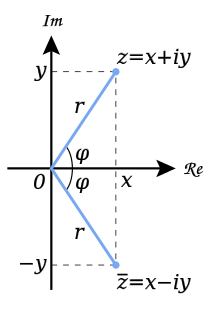


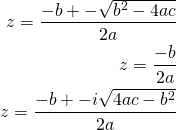
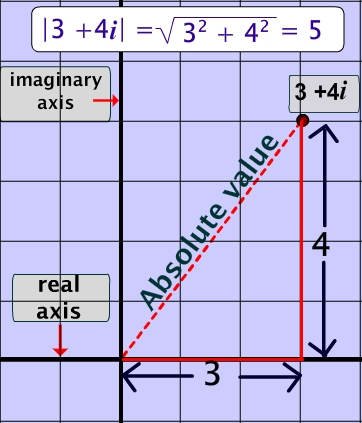




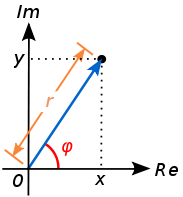

Hi @Drifter1,
Thank you for this great lesson about complex numbers. Very well structured. I do not have time right now to read it fully till the end but I will!
Why am I so interested in your article? Because of the enthusiasm I felt when reading the first lines. Hey, maybe a life long block in my scientific life could be lifted here!
It hasn't.
Let me explain: Since high school I resisted i^2 = -1 So I just took it as a tool, but more I advanced in my studies up to the postdoc (Physics), realizing how complex numbers work so well in many domains, more I got confused.
I tried to understand it geometrically, like for instance two perpendicular lines will have the product of their slopes = to -1. As a complex number can be seen as a vector when drawn in a reference of two perpendicular axis, I tried to correlate this with that. Resulted in just further confusion.
For example, I though using the imaginary number i was just a practical way to write down coordinates, separating one coordinate from the other. So why don't we have 3D complex number hanging around, of the form z = a +bi +cj ? with j having special properties too...
So my question to you: can you convince me of the reality of i^2=-1. If I got that, that would really help me in quantum mechanics. A topic I love, but for which I can't deep dive in sometimes when equations involving complex numbers appear. Complex numbers prevent me getting a picture of what is really going on when reading the equations... Now the problem has become psychological... lol!
Off topic: I loved what I read up to now, would you be interested in joining me in my effort to promote education for all by making a video for the @openschool ? Maybe about complex numbers ;-)
Complex numbers are indeed a very interesting topic of mathematics.
They are used in many different science branches and are very useful.
The imaginary unit "i" is meant to be unreal and can't be real cause i^2 = -1 <=> i = root(-1) which can't be defined in the real number space, because the subroot is negative...
I guess that "3d complex numbers" could be interesting, but I can't think of an application right now.
Complex numbers are like vectors. They have a real and a imaginary part. It's not so complicated if someone thinks about it that way.
Lastly, I'm busy with my university and I already thought of making some videos, but there is so much uploaded to YouTube already that it isn't necessary I think..
Thank you for your kind answer.
Yes, that is also how I see them, but what confuses me is why they are limited to 2D... not seeing complex numbers generalized to more dimensions (3,4 ,5 etc...) implies to me that it is just a lucky convenience, not a valid representation...
And I still do not know why i^2 = -1... (of course, I understand it mathematically as well as how to use it, but not conceptually). It is at the heart of the whole complex number tool box, but it sounds so 'invented'... For me, this very thought contradicts why complex numbers are so effective in Physics. If they are so effective as tools to describe the physical world, there must be an element of physical or geometrical truth in i^2=-1. Any clue?
You didn't understand my request. This would not be any video, like there are thousands (with many good ones) on Youtube. This would be to directly teach kids (via Skype or Dlive) by getting invested into the @OpenSchool initiative. But of course, your studies should take precedent.
Be well
And now...complex analysis :D
What's the point in studying complex number? They aren't even real! :)
Anywhoo, loved reading this! btw picture credit would look great under the picture itself.
Thank you.
I'm trying out different styles to see what looks better. But yes, I think you're right and crediting should be under the picture itself..
excellent teacher information
wonderful post @drifter1. can't wait to see the post on trigonometry
Haha will look forward to it :P
This is a great post. I was planning to post on this, but unfortunately you beat me to the punch. Nevertheless, this is very well written. If it's ok with you, I want to build upon this and talk about the complex roots of unity, and their relation to the unit circle.
Thank you!
I would be happy to see a post about the unity circle from you!
And don't worry, I don't think that I will talk about more in complex numbers in a post specific only for that topic.
But, I may talk about more when they are needed in something else (like signal analysis), if it wasn't already been explained in this post!
Nice write up and summary, reminded me of my school years.
Thanks!
This post has been upvoted and picked by Daily Picked #12! Thank you for the cool and quality content. Keep going!
Don’t forget I’m not a robot. I explore, read, upvote and share manually :)
Being A SteemStem Member